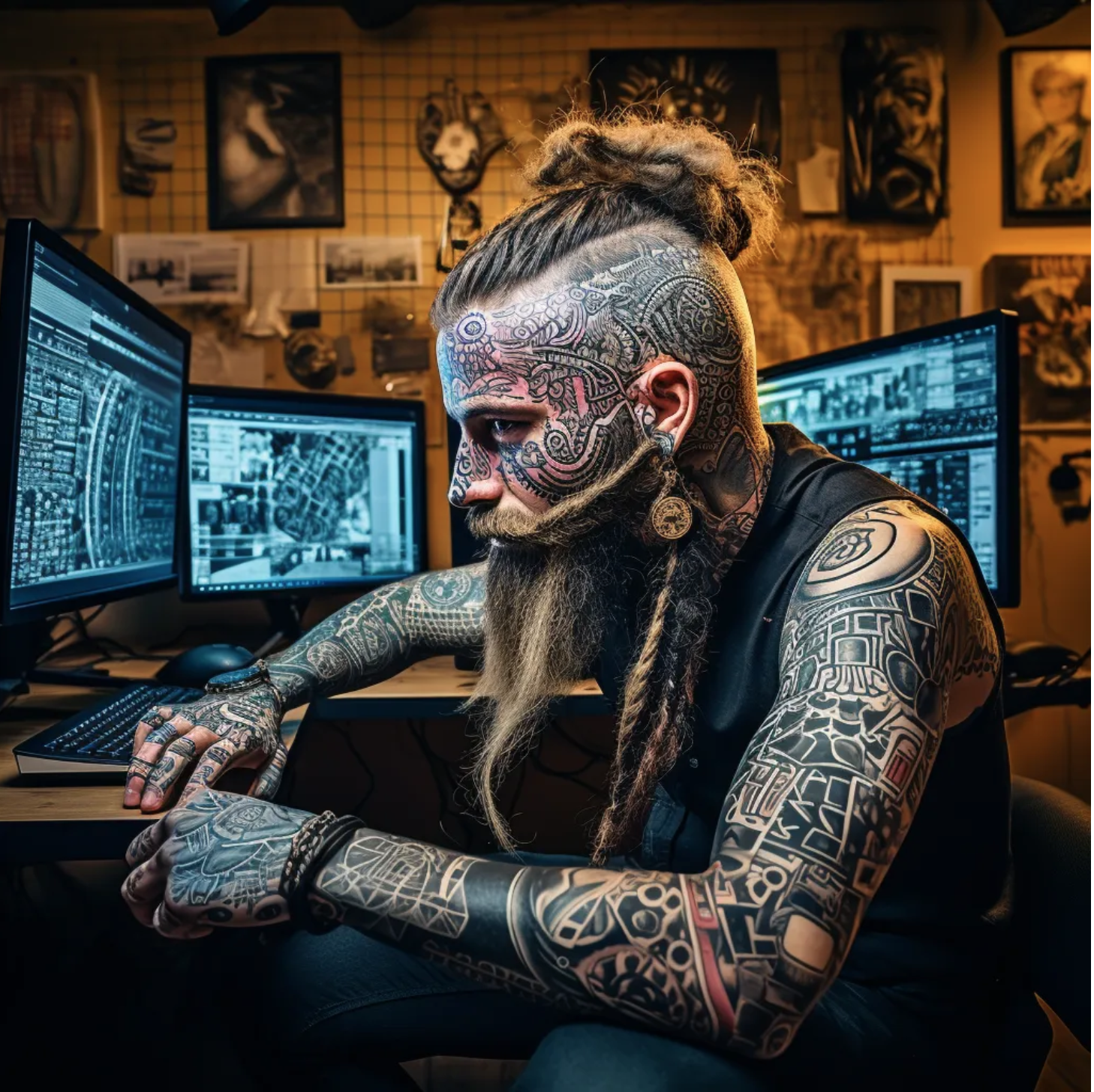Art and Copy and AI
When everything changed last November and ChatGPT’s launch forced artificial intelligence out of the realm of sci-fi and into our daily lives, we had a new thing to talk about. And we talked about it in general, monolithic terms.
“AI is going to take my job.”
“AI is going to reelect Trump.”
“AI is going to let me finally kick back and slide into Love Island the way I deserve to.”
And so on.
This is understandable because AI was and is an abstraction, an unknown, something happening somewhere else but also somehow to us. It was like someone had flipped a switch and a mist of change was let loose over the world and that mist would slowly, deliberately creep over and change each and every part of culture, society and business.
But as things get real it’s pretty clear that the mist is moving at different speeds and different places.
There are many AIs. There are many tools in many different stages of development, with wildly different degrees of utility and relevance. And as we talk about AI and position it in our lives, we would do well to stop painting with broad brushes and start taking this nuance into account.
And nowhere is this truer than In the creative applications that I am mostly concerned about.
Consider these two different scenarios within the art-copy duality.
First, take your average writer-type looking for AI help with headlines or—god, no!—a script. If they take the trouble to type a brief into one of the general-purpose AI tools, they will receive something along the lines of this: A grammatically correct, misspelling-free list of excruciatingly literal options generally lacking in any reasonable definition of creativity. At best, there will be a glimmer in there. Maybe an interesting choice of words or a marginally surprising way of approaching the task. But that’s a big maybe. For writers right now, working with AI is basically the equivalent of tasking the intern. You quickly get the feeling it’s more about training your helper than getting a useful output.
Lol, this is an image Midjourney coughed up for the prompt “Copywriter briefs intern.” Point proven!
Now, take a creative looking for visual inspiration. When that person drops into the tools, they’re going to get something. Not a readymade execution that renders their skills redundant and turns them into a mere prompt jockey. Not even close. But, I’d say 8 out of ten times, they are going to get something helpful. Inspiration, unexpectedness, even (especially?) weirdness. It’s akin to tapping into the brain of the semi-communicative art director with head tattoos who will never be allowed into a client presentation, who no one really knows what to do with but whose portfolio and every reference and board slap.
Awaiting your brief….
This is a long way of saying that AI creativity has arrived, but it is not evenly distributed across the work of creativity. Even within the same industry, within the same office, we will feel the impacts with different degrees of intensity. It will change our lives in different ways, depending on the kind of company we sit in, the kind of briefs we receive, the kind of teams we work as part of, and the job functions we perform.
Because of this, we have to appreciate that nuance and build it into models for understanding AI. I will call attention to a small example of this from my ex-colleague Ted Florea, founder of Ancient LLC. When he asked a bunch of agency bigs about the future impact of AI, he made a smart distinction between art and copy.
The results are similar from discipline to discipline but the distinction is useful.
This is the sort of thin-slicing we need as we move forward. And, ideally, the slices get even thinner. We need to be specific about tasks, purpose, method, and function. Much the same way we don’t talk about digital marketing—which contains everything from search to banners to video to social to dope interactive ideas—as one thing.
It matters because the choices we make around AI will matter, maybe more so than with any other technology of our lifetime. And it’s hard to imagine us making good choices if we’re being reductive when we talk about it.


